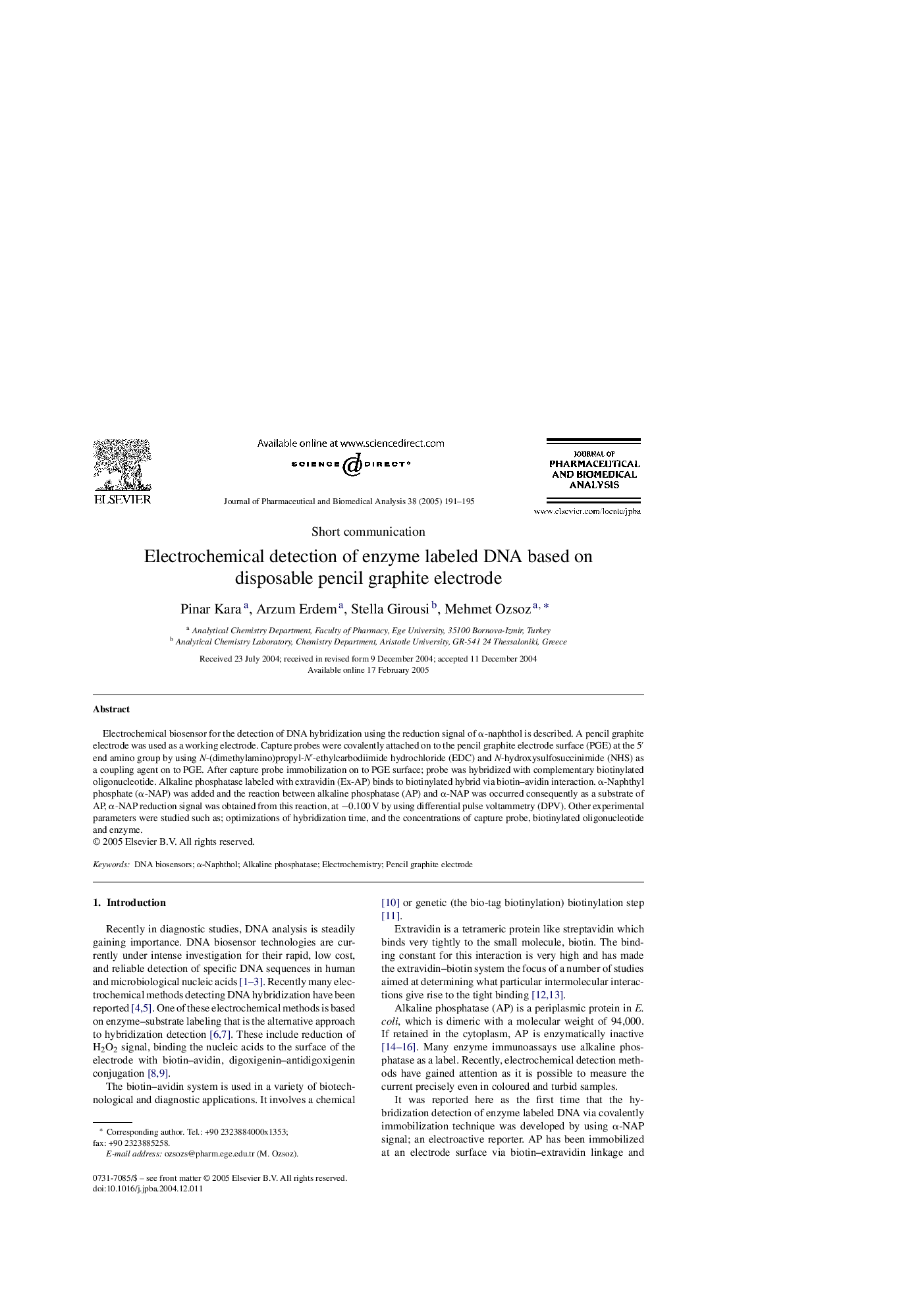| Article ID | Journal | Published Year | Pages | File Type |
|---|---|---|---|---|
| 10554362 | Journal of Pharmaceutical and Biomedical Analysis | 2005 | 5 Pages |
Abstract
Electrochemical biosensor for the detection of DNA hybridization using the reduction signal of α-naphthol is described. A pencil graphite electrode was used as a working electrode. Capture probes were covalently attached on to the pencil graphite electrode surface (PGE) at the 5â² end amino group by using N-(dimethylamino)propyl-Nâ²-ethylcarbodiimide hydrochloride (EDC) and N-hydroxysulfosuccinimide (NHS) as a coupling agent on to PGE. After capture probe immobilization on to PGE surface; probe was hybridized with complementary biotinylated oligonucleotide. Alkaline phosphatase labeled with extravidin (Ex-AP) binds to biotinylated hybrid via biotin-avidin interaction. α-Naphthyl phosphate (α-NAP) was added and the reaction between alkaline phosphatase (AP) and α-NAP was occurred consequently as a substrate of AP, α-NAP reduction signal was obtained from this reaction, at â0.100 V by using differential pulse voltammetry (DPV). Other experimental parameters were studied such as; optimizations of hybridization time, and the concentrations of capture probe, biotinylated oligonucleotide and enzyme.
Related Topics
Physical Sciences and Engineering
Chemistry
Analytical Chemistry
Authors
Pinar Kara, Arzum Erdem, Stella Girousi, Mehmet Ozsoz,
